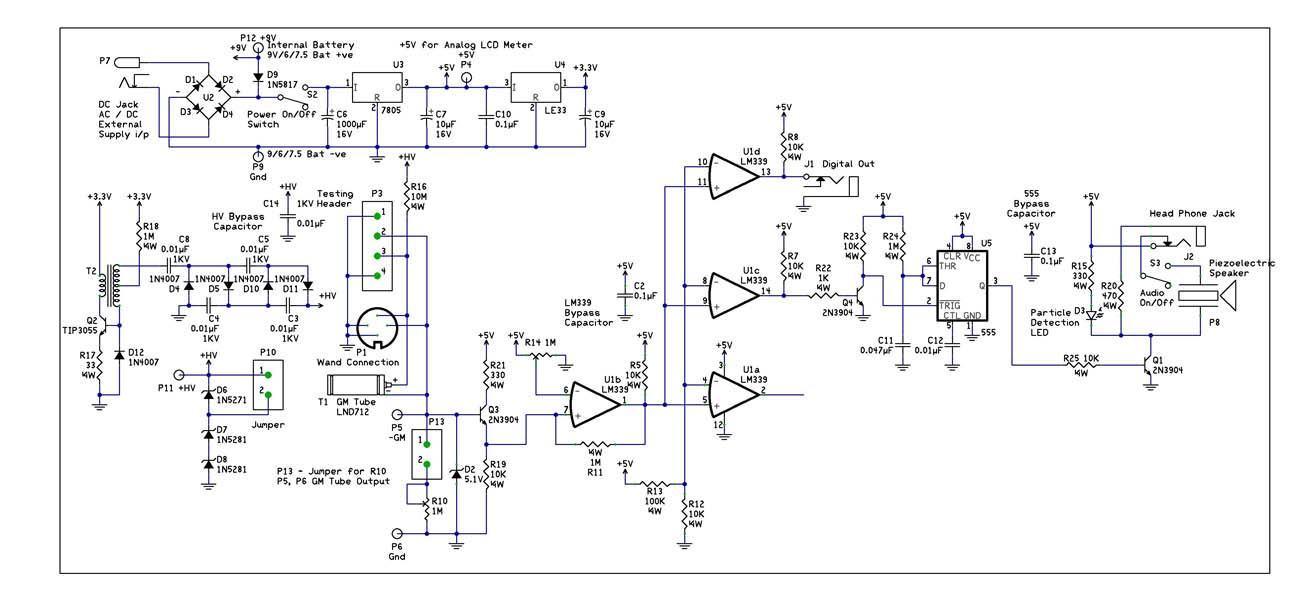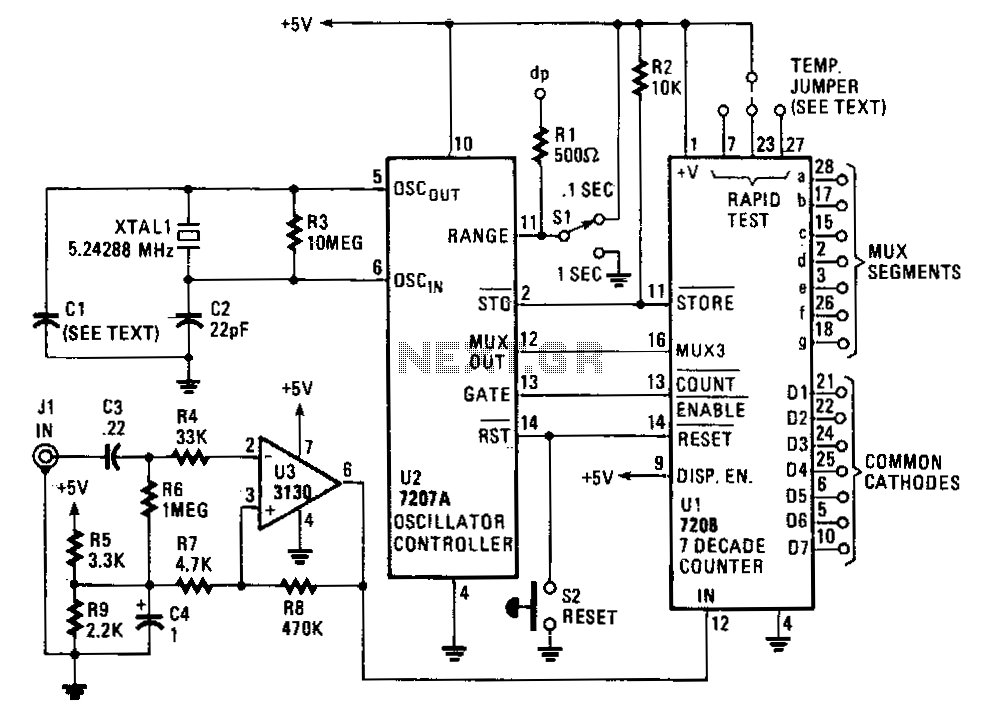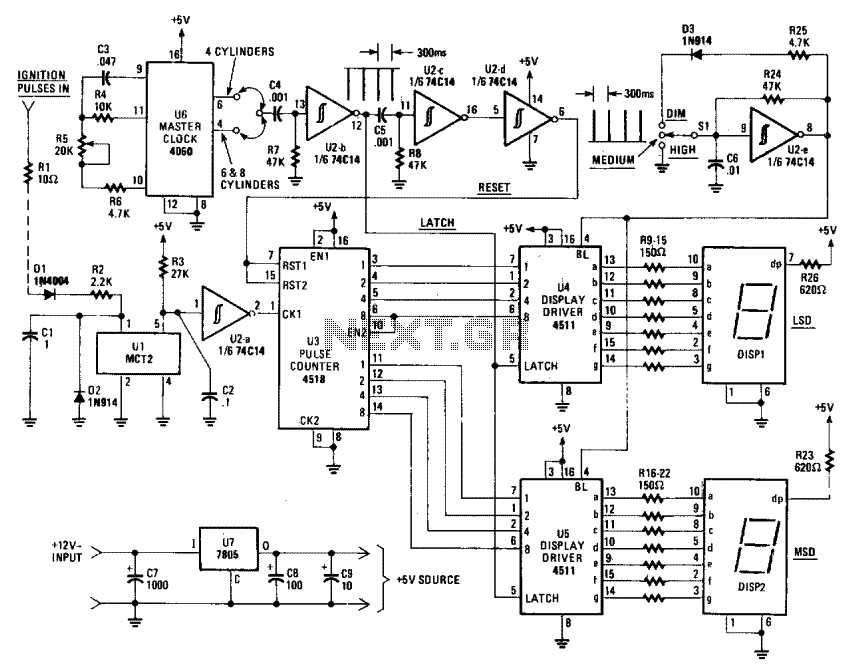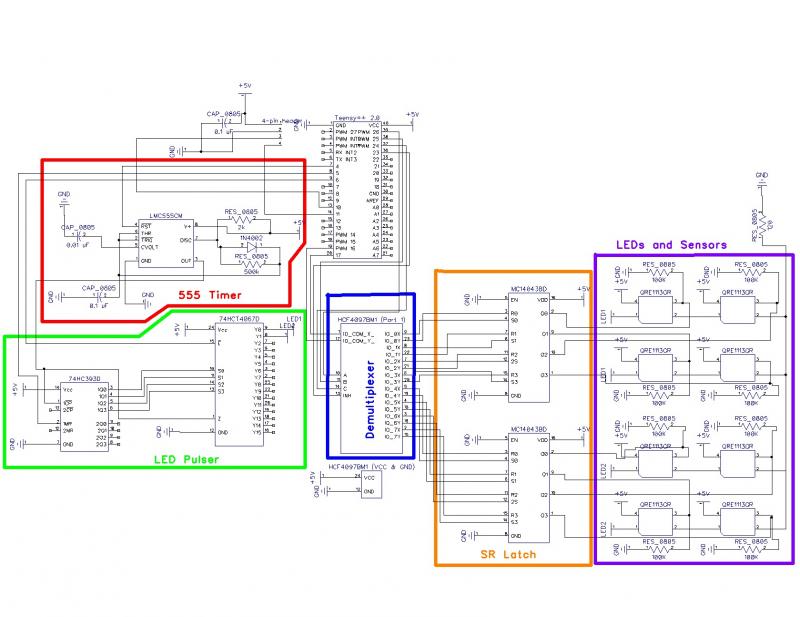
10 Mhz universal counter
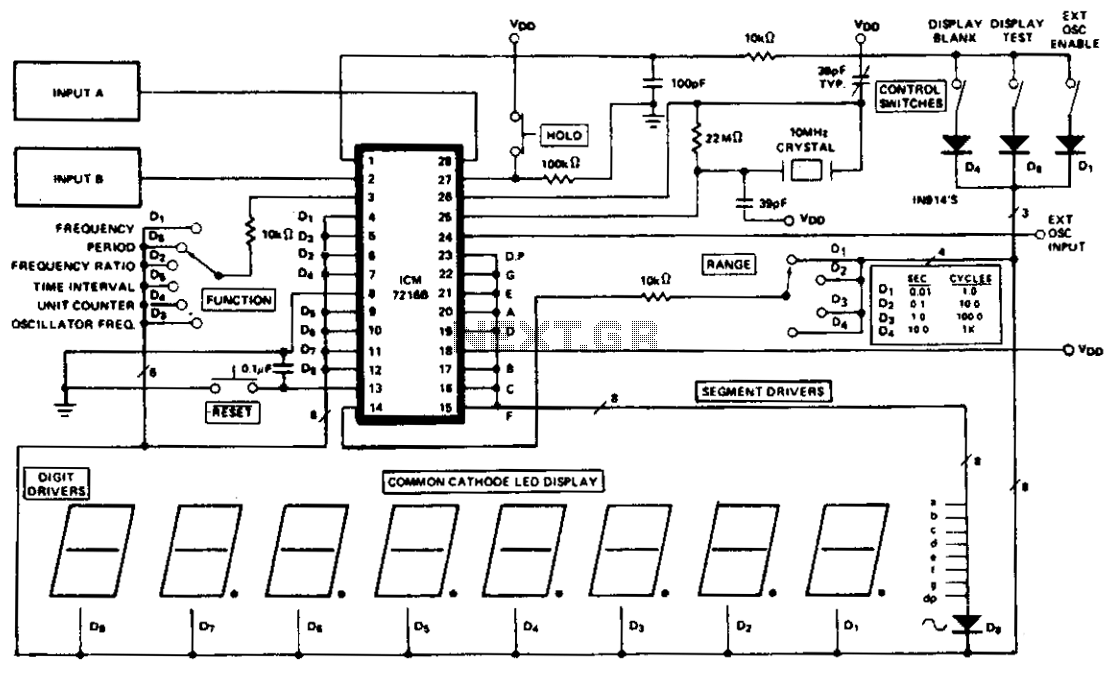
The ICM7216A can be utilized as a complete universal counter with minimal components. This circuit is capable of handling input frequencies of up to 10 MHz at INPUT A and 2 MHz at INPUT B. In cases where the signal at INPUT A exhibits a very low duty cycle, it may be necessary to incorporate a 74121 monostable multivibrator or a similar circuit to elongate the input pulse width, ensuring it reaches a minimum duration of 50 ns.
The ICM7216A is a versatile integrated circuit designed for frequency counting applications. It features dual inputs, allowing for simultaneous counting of two different frequency sources. The maximum frequency specifications indicate that INPUT A can process signals up to 10 MHz, making it suitable for high-speed applications, while INPUT B can handle frequencies up to 2 MHz, catering to lower-speed signals.
In scenarios where the duty cycle of the signal at INPUT A is low, the pulse width may not meet the minimum requirement for accurate counting. To address this, a 74121 monostable multivibrator can be implemented. This device generates a single output pulse of a specified duration in response to an input trigger. By configuring the 74121 to stretch the pulse width to at least 50 ns, the ICM7216A can reliably count the incoming pulses, ensuring accurate frequency measurement.
The circuit design should include proper connections for the ICM7216A and the 74121, along with necessary bypass capacitors to stabilize the power supply. The output from the 74121 should be routed to INPUT A of the ICM7216A, while INPUT B can be connected to a second frequency source. Additionally, appropriate pull-up or pull-down resistors may be required on the inputs to ensure stable logic levels.
Overall, this configuration allows for effective counting of high-frequency signals while accommodating low-duty cycle inputs, enhancing the performance and reliability of the universal counter application.The ICM7216A or can be used as a minimum component complete Universal Counter. This circuit can use input frequencies up to 10 MHz at INPUT A and 2 MHz at INPUT B. If the signal at INPUT A has a very low duty cycle it may be necessary to use a 74121 monostable multivibrator or similar circuit, to stretch the input pulse width to be able to guarantee that it is at least 50 ns in duration.
The ICM7216A is a versatile integrated circuit designed for frequency counting applications. It features dual inputs, allowing for simultaneous counting of two different frequency sources. The maximum frequency specifications indicate that INPUT A can process signals up to 10 MHz, making it suitable for high-speed applications, while INPUT B can handle frequencies up to 2 MHz, catering to lower-speed signals.
In scenarios where the duty cycle of the signal at INPUT A is low, the pulse width may not meet the minimum requirement for accurate counting. To address this, a 74121 monostable multivibrator can be implemented. This device generates a single output pulse of a specified duration in response to an input trigger. By configuring the 74121 to stretch the pulse width to at least 50 ns, the ICM7216A can reliably count the incoming pulses, ensuring accurate frequency measurement.
The circuit design should include proper connections for the ICM7216A and the 74121, along with necessary bypass capacitors to stabilize the power supply. The output from the 74121 should be routed to INPUT A of the ICM7216A, while INPUT B can be connected to a second frequency source. Additionally, appropriate pull-up or pull-down resistors may be required on the inputs to ensure stable logic levels.
Overall, this configuration allows for effective counting of high-frequency signals while accommodating low-duty cycle inputs, enhancing the performance and reliability of the universal counter application.The ICM7216A or can be used as a minimum component complete Universal Counter. This circuit can use input frequencies up to 10 MHz at INPUT A and 2 MHz at INPUT B. If the signal at INPUT A has a very low duty cycle it may be necessary to use a 74121 monostable multivibrator or similar circuit, to stretch the input pulse width to be able to guarantee that it is at least 50 ns in duration.

